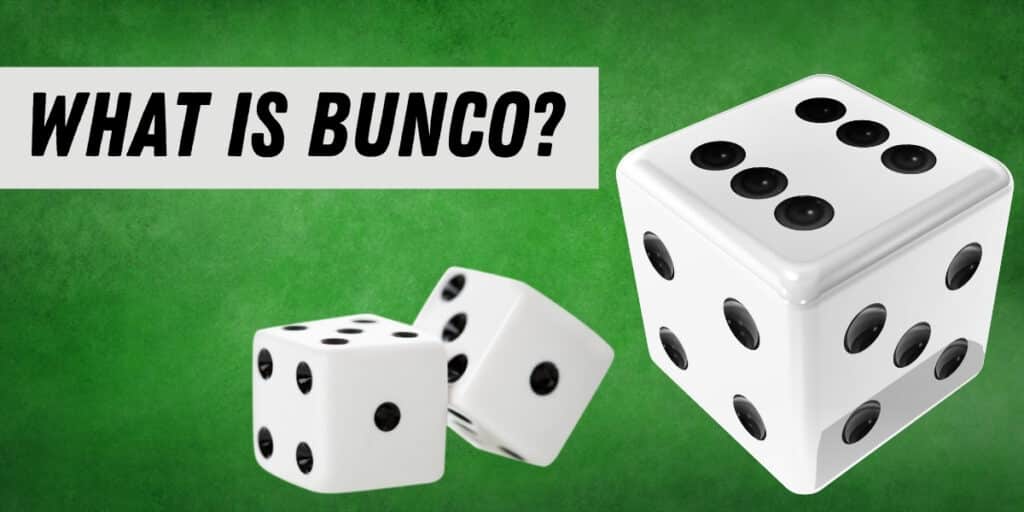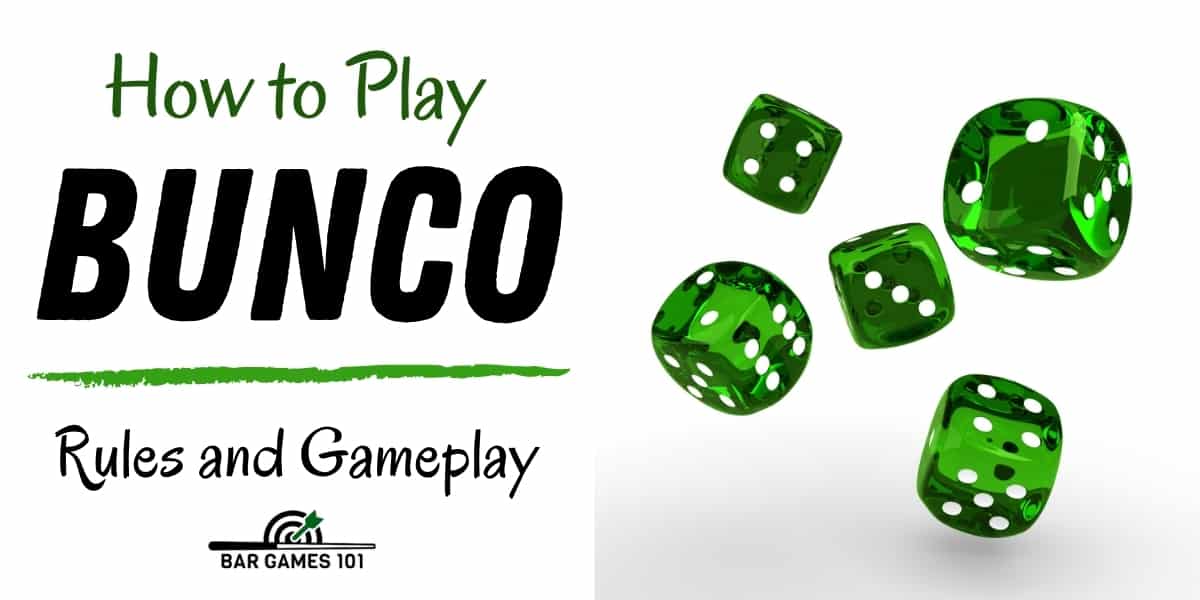Bunco is a very old game and one that had a more seedy origin in some countries. This is certainly ironic when you consider the game was also a popular choice for wealthy socialites as well. We’ll be taking a look at the Bunco rules in more detail in this guide so you can learn everything you need to know in order to play.
If you are looking for a good party dice game that you can easily play with large groups, then Bunco would make an excellent choice. Bunco also has the advantage of not needing much in the way of equipment either. Learning the rules of Bunco is also quite simple as well. So, let’s learn more about Bunco.
What is Bunco?

Bunco goes back to the 1800s and it has a rich and varied history. Over time, Bunco has taken numerous forms and been played at all kinds of events from bachelorette parties to birthdays. The game originally started out as a confidence game and was similar to three-card monte.
The game became popular in the United States in the mid-1800s and was a popular choice for gambling parlors. Some of these establishments even called themselves Bunco parlors after the game. However, many of these establishments were less than reputable and the game was usually fixed in order to ensure the house won.
During the prohibition era in the 1920s Bunco once again became a popular gambling game. But since then it has slowly transformed into a popular party and family game. It might not be Shogi levels of old but from a historical perspective Bunco is still very interesting, but how do you play it?
How to Play Bunco
What You’ll Need
One of the most appealing things about Bunco is that you don’t really need much equipment in order to play, it is a dice game after all. What you will need is dice, paper, pens, and a bell or anything else that makes a loud noise.
Now why it may be possible to piece all these things together on your own if you really want to play Bunco we do recommend using a Bunco set. The product below is a great example of the sets available.
Having a Bunco set will make playing the game much easier and the setup will be much quicker. If you are playing with a larger group of people then a Bunco set is a must buy because it will have plenty of dice included. Which is something you will need lots of in larger Bunco games.
The Dice
Dice are really the only piece of equipment we need to talk about when it comes to Bunco. Each table of players will require at least 3 dice. In some variations of Bunco, each team of players will need a set of 3 dice. So, there will be a lot of dice rolling in this game.
Score Sheet
You’ll need a sheet where you can track the scores of each player. You can make your own sheet with a simple piece of paper, or you can use the ones that come in the kit we mentioned above. Here is an example of what the score sheet should look like.

Let’s get down to the Bunco rules and gameplay so you can see exactly how to play.
Bunco Rules and Gameplay
When it comes to a game as old as Bunco there are bound to be numerous variants/ styles of play. In this guide, we’ll be talking about the general party game rules most players use today. We’ll also be highlighting the different approaches you can take as well.
Bunco these days is a party/ social game so if you have to make some small alterations, don’t worry. But if you’re playing Bunco for the first time then following the rules we set out will help you get to grips with the game.
Setting Up A Bunco Game

Bunco is best suited to larger groups of people. Under the standard/ traditional rules, Bunco is a game suited to groups of 4. In general, most Bunco sets say there should be 4, 8, or 12 players in total.
The game can be played with a different amount of players but you will need to tweak the rules to accommodate them in some way. For example, instead of groups of 2 or 4 people, you might have a group of 3.
There are 6 rounds in a game of Bunco and players should ideally be able to sit on separate tables. To help explain the rules we’ll be saying that there are 12 players in our group game with 3 tables.
Players will separate into 3 teams of 4 and then take their seats. The tables will be designated a number the most common setup is table 1, 2, and 3. Under traditional Bunco rules table, 1 will be known as the head or queen table.
The 4 players on each table are separated into 2 teams. The team on the head table will then signal the game begins; traditionally this is done by ringing a bell. Many Bunco sets will include a small bell for this very purpose.
Scoring

Once the game starts each set of 2 will take turns rolling 3 dice to earn points. The number of points you get will depend on what the dice shows. Each round number is very important in Bunco because that decides the value of the numbers on the dice. To see how the scoring works check out the list below.
- If all three dice match the round number you will score 21 points, this is called a Bunco.
- If all three dice match but aren’t the round number you score 5 points.
- 1 point is awarded for each dice that matches the round number.
If you score during your dice roll then you can continue to roll. If or when you don’t score the dice will pass to your teammate who will then roll. Once a player on the head table scores 21 the round ends.
In some variants of Bunco rules, this means all players must instantly stop rolling and the round ends. However, some modern versions of Bunco relax this rule and allow people who are mid-roll to continue.
Moving Tables
Once the round ends the 2 teams should compare scores, the team with the most points will move up. While the losing team will have to stay at their table. The rules for the head table are a little different.
Instead of staying, the losing team will have to move down to the lowest table. The second round will then begin. The game continues following this pattern till 6 rounds have been completed.
Winning The Game

Once the sixth round is over each team should tally up their scores. Which you should have been keeping track of throughout the game. The team with the highest score wins! Traditionally, the winning team would be awarded a prize of some sort.
This was particularly common when Bunco was played by more wealthy households during house parties. But of course, these days simply being in the winning team is enough for many of us.
In some variations of Bunco the overall score isn’t tallied up at the end. Instead, the amounts of wins and losses you have over the course of the 6 rounds are what decides whether you win or not. This variant can be better for new players since it makes the end scoring process much quicker.
Bunco – A Fun Party Game With A Rich History
If you’re looking for a fun group game then Bunco could certainly be a great choice! Bunko’s history is fascinating and it’s a great example of how views of games can change over time. While it’s not the best game for 2 players it certainly has its audience and is sure to be a fun party game for any occasion.


